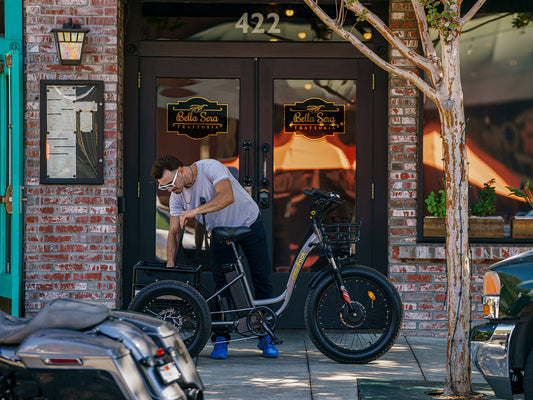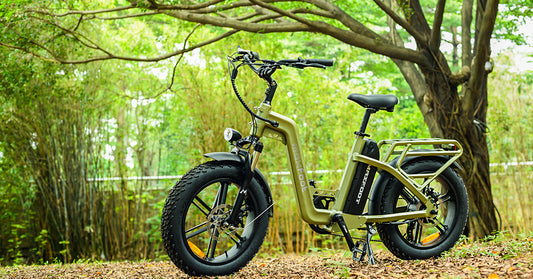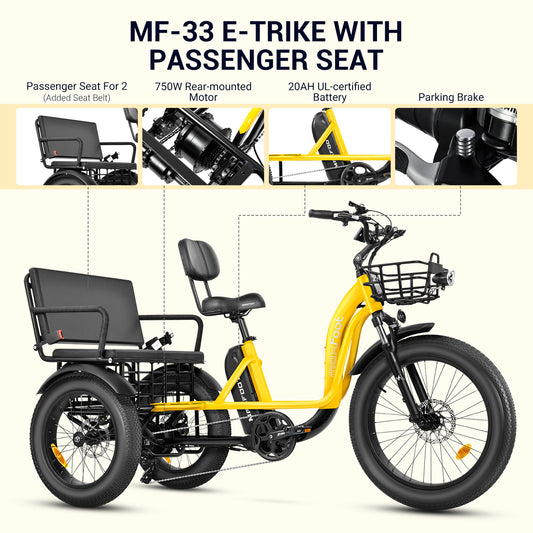In the Golden State of California, where innovation and sustainability are celebrated, the rise of electric bikes or e-bikes has been welcomed with open arms. However, with this rapidly growing mode of transportation, questions surrounding its legality have arisen. Are electric bikes street legal in California?
Yes, E-Bikes Are Street Legal. California has been a pioneer in providing legal frameworks for alternative modes of transport like e-bikes. But as with any legal question, the answer comes with conditions and clarifications.
This article will explore these legalities and answer all your queries related electric bike riding in California.
Understanding E-Bike Classification: The Three Classes in California
The most influential legislation governing e-bikes in California is Assembly Bill 1096 (AB 1096). It was passed into law in 2015 by then-Governor Jerry Brown. Numerous cycling organizations have lauded it as one of America's "most progressive" bicycle laws for its approach to safeguard cyclists' rights while prioritizing public safety. This bill exclusively applies to electric bikes.
And the vehicle code section 312. 5 clearly define electric bike as a vehicle that has a motor with a power output of less than 750 watts and is equipped with fully operational pedals for human propulsion.
The same California law categorizes e-bikes into three classes:
- Class 1 electric bike, also referred to as a low-speed pedal-assisted electric bike, incorporates a motor that is designed to aid the cyclist only when they pedal. The assistance from the motor terminates once the bike attains a speed of 20 miles per hour.
- Class 2 electric bike, known as a low-speed throttle-assisted electric bike, has a motor that has the ability to drive the bike independently. However, this motor is incapable of offering help when the bike's speed touches 20 miles per hour.
- Class 3 electric bike, also called a speed pedal-assisted electric bike, is fitted with a motor that helps solely when the rider is pedaling. This assistance ends when the bike hits a speed of 28 miles per hour. A distinctive feature of this class of e-bike is the inclusion of a speedometer.
Where Should I ride My Bike in California: What the Law Says?
In California, the government outlines four primary types of bikeways for cyclists, including those on electric bikes, each with specific rules for e-bike use.
Class I (Bike Paths)
These pathways, typically found in nature preserves, parks, and other recreational areas, are exclusively for bicyclists and pedestrians. They're often situated away from main roads. Only Class 1 and Class 2 e-bikes are permitted on these paths.
Class II (Bike Lanes):
Bike Lanes are protected one-way bike lanes located within existing streets and are delineated with painted markings. Class 1, Class 2, and Class 3 electric bikes can all legally traverse California's bike lanes.
Class III (Bike Routes)
Incorporated into streets and roadways, bike routes may not always have distinctive markings but are usually identified by roadside signage. All three classes of electric bikes are permitted on Class 3 bike routes in California.
Class IV (Cycle Tracks)
Cycle Tracks are specifically intended for bicycle traffic and are typically integrated into existing roadways. They are usually distinguished with special markings and are separated by physical barriers. However, only Class 1 and Class 2 e-bikes are legally allowed to use these tracks.
One significant prohibition to note is that e-bikes are not permitted on sidewalks in cities such as San Francisco that have specific laws against it.
Who can Ride These Electric Bikes?
Anyone can ride a Class 1 or 2 e-bike, but for Class 3 e-bikes, riders must be at least 16 years old. In addition, California law requires all Class 3 e-bike riders to wear helmets, irrespective of their age.
Licensing Registration and Insurance for Electric Bikes
According to California legislation, e-bikes are not categorized as motor vehicles. As a result, there's no requirement for a driver's license, registration, or insurance to operate them.
Are Modifications Allowed in Electric Bikes?
In California, due to specific legal definitions of electric bikes, as defined in the earlier sections, it's illegal to modify an electric bicycle or have it altered. So, actions, like swapping the standard electric motor for a more powerful one, are not permissible. If found guilty of such modifications, you could be subject to penalties and other legal complications.
E-Bikes and Pedestrian Safety Concerns
While e-bikes are certainly legal in California, they've raised concerns about pedestrian safety. Critics worry that the high speeds achievable on some e-bikes, particularly Class 3, could pose dangers to pedestrians, especially on mixed-use paths.
The accessibility of e-bikes to all ages further intensifies these concerns. It's essential to remember that e-bike riders are expected to respect all traffic laws and regulations, just like any other road users.
Best practices for e-bike usage involve not only adhering to laws but also respecting the safety and rights of other road users. This includes following speed limits, using designated bike lanes or paths when available, and wearing protective gear.
Final Words
E-bikes are indeed street legal in California, but they come with their own set of laws and restrictions. Riders should familiarize themselves with these rules, respecting both the laws and their fellow road users, to ensure a safe and enjoyable ride for all.
As California continues to pave the way for alternative, environmentally friendly transportation, the acceptance and usage of e-bikes will likely increase, fostering a greener, more sustainable future.




